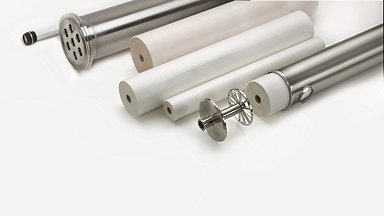Membrane filtration solutions for dairy, plant-based and other protein ingredients
Membrane filtration supports efficient production of milk- and whey-based foods and beverages, as well as high-value nutrients for infants, sports people and seniors. It is also used to concentrate plant-based proteins and to purify proteins from emerging sources, often referred to in the industry as “alternative proteins”.
Membrane filtration also facilitates process water recovery and reuse, meeting high-quality standards. Traditional food processing often results in wastewater being dismissed down the drain. But with membrane filtration, it can be reused for equipment cleaning or even in food processes where it has direct contact with the product itself. Treated water can surpass even drinking water standards in some regions.

Seamless cooperation for optimal commissioning
Recognising that commissioning is critical to long-term performance, Mammen Mejerierne (which translates to Mammen Dairies) trusted our experienced team to oversee every detail, from installation and testing to fine-tuning the system for optimal efficiency from day one.
Thanks to this seamless commissioning experience and the ongoing support that followed, Mammen Mejerierne gained confidence in their investment, knowing their filtration unit was built for reliable, day-to-day performance.
Explore how we collaborated during the commissioning phase to achieve optimal performance.

Expert advice on membrane filtration
How we do business with you
Transportation and cost savings
Gain more value from your whey process
Achieve high levels of protein without additives
Extend shelf life in premium milk
How to ensure efficient operation of your membrane filtration system
Our membrane expertise
See a spiral-wound membrane unit in action
Explore the unique benefits of spiral-wound membranes
Membrane filtration processes
Within the dairy industry, four different membrane filtration processes are used: microfiltration (MF), ultrafiltration (UF), nanofiltration (NF), and reverse osmosis (RO). The figure illustrates which milk and whey components can be concentrated by means of each process, depending on the density of the membrane.




























